Overview
The Revolutionary Martyrs’ Cemetery is a hill-top memorial where decorated figures who fought against Japan for Korea’s liberation are buried in Pyongyang. Each grave is adorned with an individually sculptured bronze bust depicting the fallen.
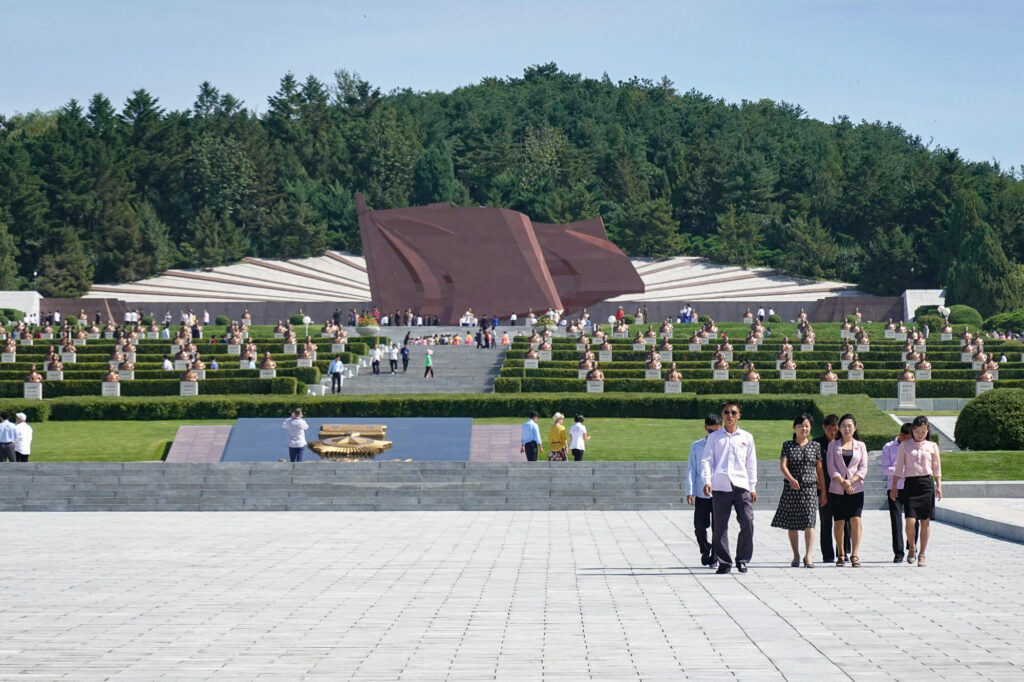
The cemetery is located at Jujak Peak on Mt. Taesong on the outskirts of Pyongyang. The site features a birds-eye scenic view of Pyongyang, a scenic spot that was chosen to enshrine the martyrs buried here.
The Revolutionary Martyrs’ Cemetery was built on Mt. Taesong in 1975 on the occasion of the 30th founding anniversary of the Workers’ Party of Korea. it underwent major renovation and an expansion which was unveiled in 1985 on the 40th anniversary of the same occasion.
The Anti-Japanese Struggle
The Korean peninsula was annexed by the Japanese in 1910 and was considered part of Japan until the country was liberated in 1945. During the military occupation, the Japanese worked to erase Korean history and culture, including the language and committed atrocities against the Korean people.
Koreans in Manchuria established rebel groups of former soldiers and volunteer civilian fighters to resist this Japanese imperialism, and harsh guerilla warfare was waged during the 1930s and 1940s. This period is referred to in North Korea as the ‘anti-Japanese struggle’.
Kim Il Sung, later to be North Korea’s founder and President, commanded his own guerilla faction named the Korean People’s Revolutionary Army who as per North Korean history, was largely responsible for the liberation of Korea from the Japanese. These efforts are the foundation of President Kim Il Sung’s rise to power, legacy, and admiration in North Korea.
The decorated anti-Japanese fighters who lost their lives during this period, and the revered veterans that died in later years, are those which are buried in the Revolutionary Martyrs’ Cemetery.
Kim Jong Suk
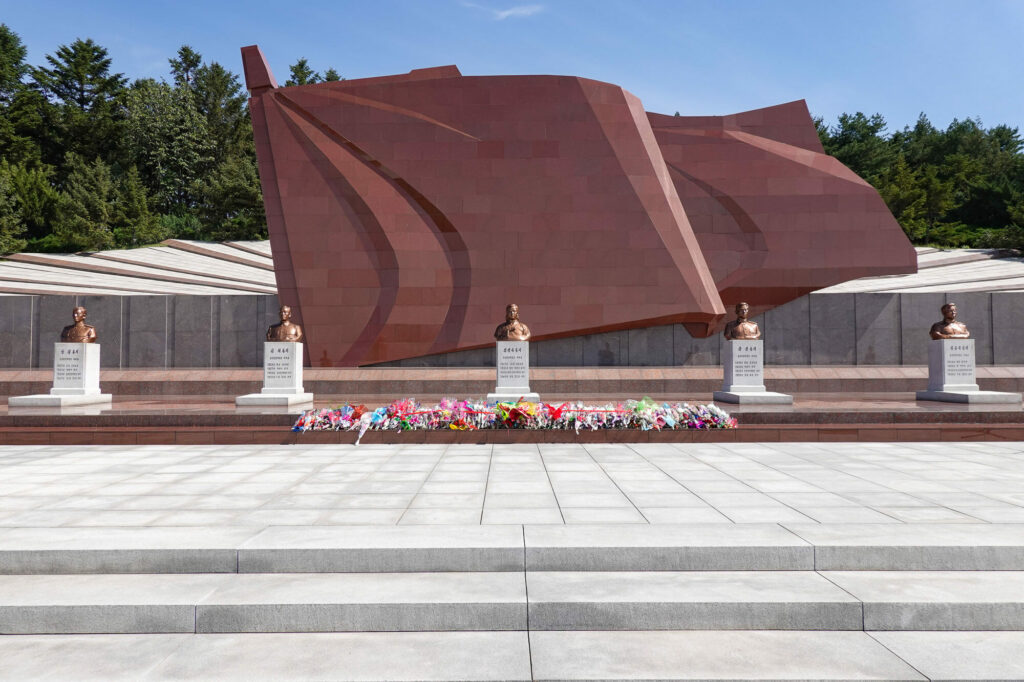
The most notable burial at the Revolutionary Martyrs’ Cemetery is Kim Jong Suk. Kim Jong Suk was Kim Il Sung’s wife, the mother of his son and successor Kim Jong Il, and the grandmother of current North Korean leader Kim Jong Un. She died on September 22, 1949.
In North Korean history, Kim Jong Suk is esteemed as a revolutionary fighter and anti-Japanese heroine, credited with saving the life of President Kim Il Sung at risk to her own. Her selfless actions ensured the revolution continued under his leadership, and that Kim Jong Il was raised to take over the reins as occurred decades later.
Kim Jong Suk shares the reverence of Kim Il Sung and Kim Jong Il in North Korea; her portrait and depiction in statues and murals can be found across the country.
Design & Symbolism
The Revolutionary Martyrs’ Cemetery was designed by the Merited Sculpture Production Company of the Mansudae Art Studio in Pyongyang.
The entrance to the site is a large gate in traditional Korean style. There is a car park here, and a large set of stairs leads up to the cemetery. The top presents an incredible view of Pyongyang over a sea of green pine trees.
There are rows of graves that are staggered up the hill. The bronze busts for each hero have been individually crafted to their likeness, and their headstones are engraved with their name, and dates of birth and death.
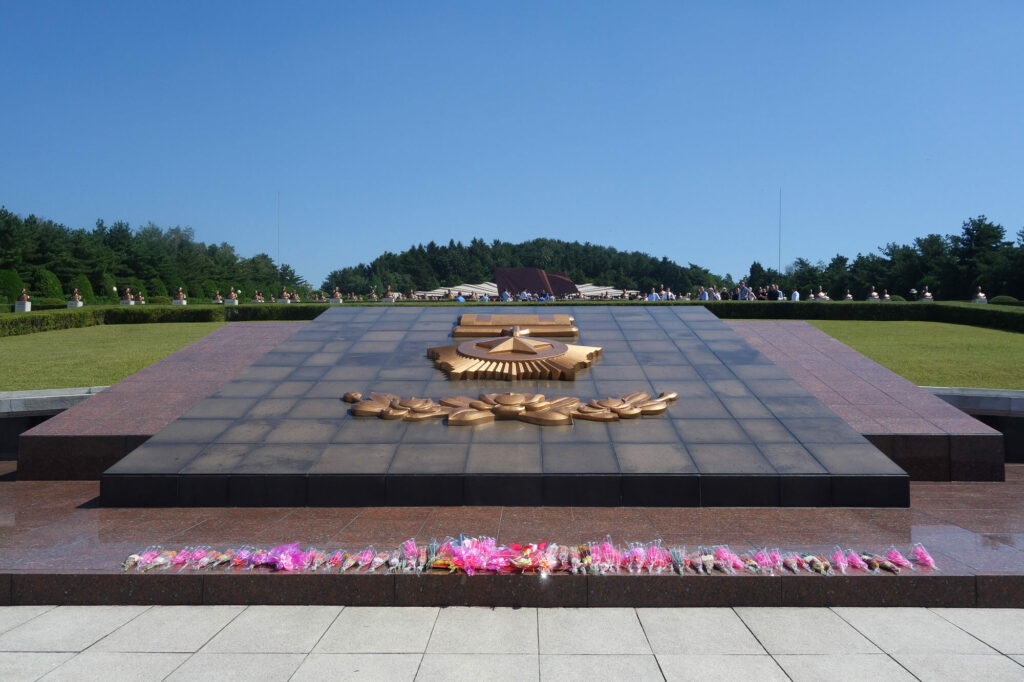
All those laid to rest in the Revolutionary Martyrs’ Cemetery are considered to have been awarded the Hero of the Republic medal (established in 1950, after the liberation), one of the highest titles in the country. This is not indicated on each grave, but instead by one large Hero of the Republic medal carved in gold relief at the base of the cemetery. Floral tributes are typically laid by visitors here on arrival.
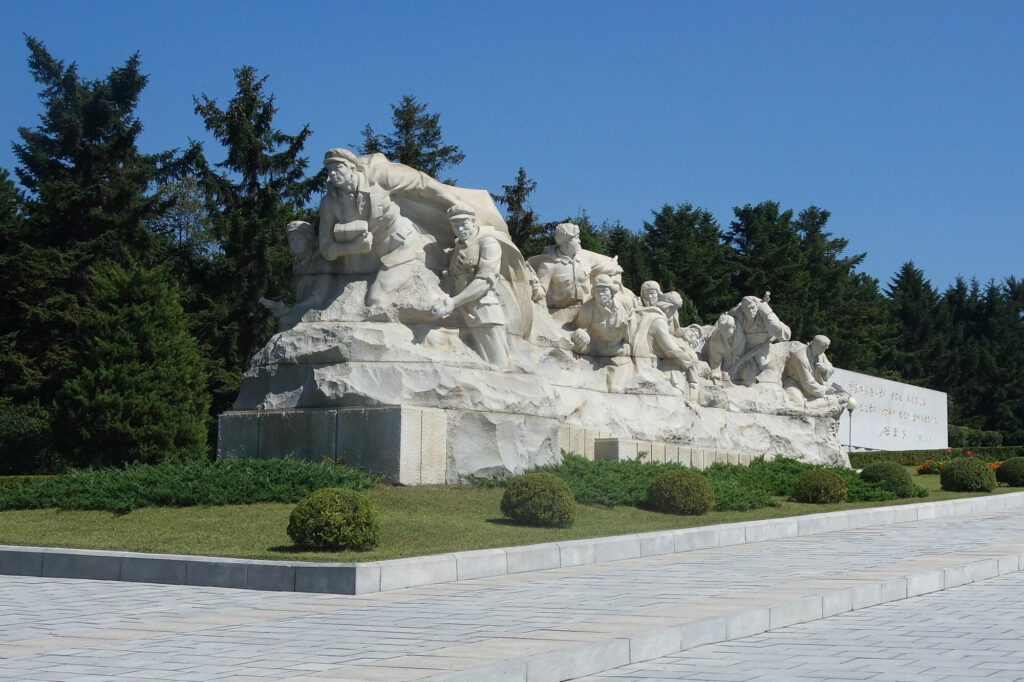
Group sculptures flank each side of the cemetery depicting guerilla fighters moving bravely into battle, and of mourners.
The head of the site is a massive fluttering flag in red stone, and Kim Jong Suk’s grave is the centrepiece to this, where it’s customary for locals to lay flowers at the base.
Notable burials
Kim Jong Suk: Kim Il Sung’s wife, mother of Kim Jong Il, and anti-Japanese heroine
Kim Chaek: A guerilla fighter and who fought alongside Kim Il Sung against the Japanese. Later entered politics under Kim Il Sung
Kang Kon: A guerilla fighter and who fought alongside Kim Il Sung against the Japanese. Helped establish the Korean People’s Army
Kang Pan Sok: The mother of Kim Il Sung
Nam Il: A general who moved to North Korea after liberation. Served as Chief of Staff during the Korean War and Minister of Foreign Affairs afterward. Led armistice talks to bring ceasefire in the Korean War
Interesting Facts
- Only the most significant contributors to the liberation are buried here. Other notable heroes from this period, such as officials that worked at important posts of the party after liberation, are instead buried at the Patriotic Martyrs Cemetery in Sinmi-ri on the outskirts of Pyongyang, which was completed in 1985 (the year after the Revolutionary Martyrs’ Cemetery was renovated)
- Many of those buried here have had hometowns, schools, factories, farms, and units of the Korean People’s Army named after them
- On major holidays such as National Day, formal ceremonies including the laying of wreaths and flower baskets are held at the cemetery and often broadcast on Korean state media
- The majority of revolutionary martyrs here died in their teens or twenties, however, decorated veterans who carried forward the cause of liberation have been buried here decades later
- A keen pair of eyes can spot the Revolutionary Martyrs Cemetery from vantage points in Pyongyang, include from the Koryo Hotel
- Lighting rods are installed to prevent bronze busts from being struck by lightning
- Heroes from the Korean War are not buried here but at the Victorious Fatherland Liberation War Cemetery
Visiting on Our Tours
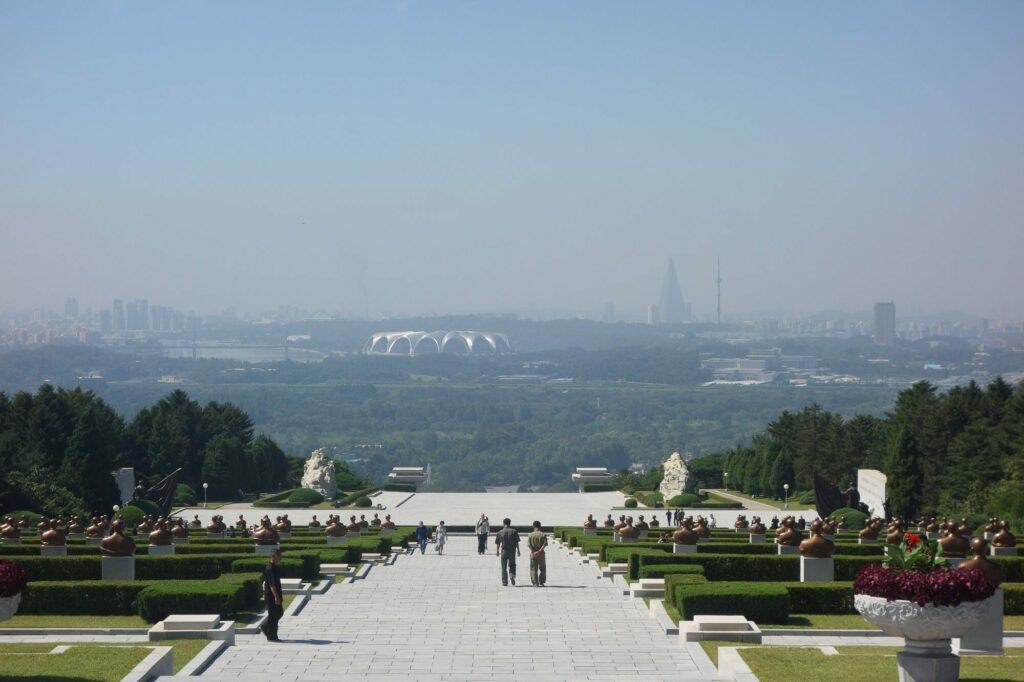
We often include the Revolutionary Martyrs Cemetery on our tours after a visit to the nearby Kumsusan Palace of the Sun, the mausoleum of Kim Il Sung and Kim Jong Il, as we’ll be in formal dress for the occasion. Technically there is no strict dress code for the cemetery, but looking tidy will be well received as this is a sensitive site with a solemn atmosphere. When visiting, etiquette is to be respectful, keep your voice down, not to run or sit down, or to eat or smoke on site.
It’s customary to buy flowers to lay at the base of the grave of Kim Jong Suk. This is not required but is encouraged during your visit.
There are a lot of stairs at the Revolutionary Martyrs Cemetery, and it is not wheelchair accessible. The site is wide and exposed and can be extremely hot on sunny days.
